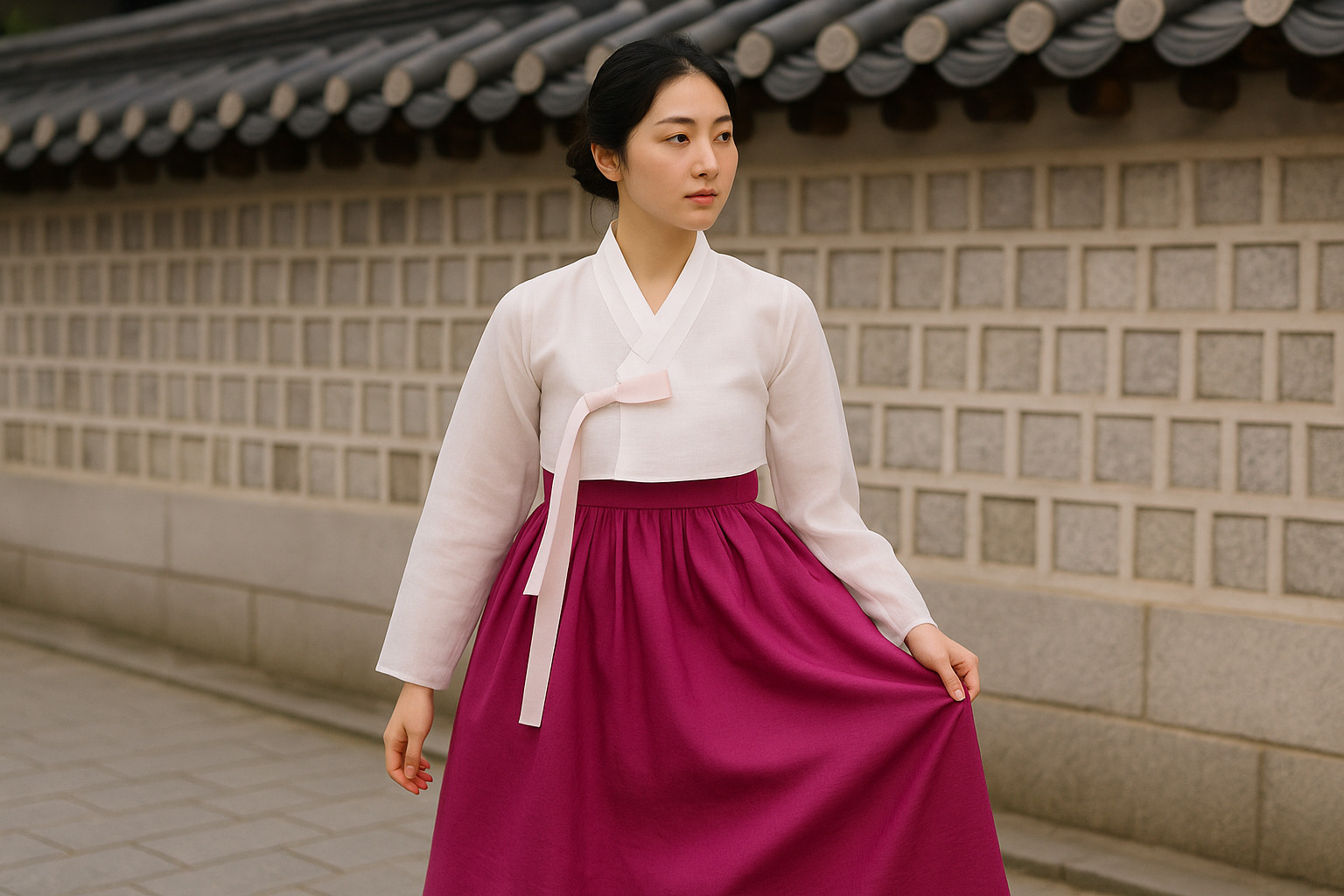Is the hanbok still relevant today? The answer sits at the intersection of heritage and reinvention. The hanbok—once worn daily by Korean women—is reclaiming space not as museum relic, but as a living, wearable artform that moves across catwalks, K-dramas, and city sidewalks with deliberate grace.
Traditional Feminine Hanbok: Structure and Symbolism
A traditional women’s hanbok comprises two main pieces:
- Jeogori (jacket): Fitted across the upper body with curved lines, sometimes extended into long ribbon-like otgoreum.
- Chima (skirt): A high-waisted, full wraparound that flows from the chest down.
These components are built not to outline the body, but to shape an image of flowing elegance. The silhouette suggests softness and poise, designed to express movement and modesty. Each layer speaks to history—Confucian ideals, social order, and aesthetics shaped by centuries.
Color and class were intertwined. Noblewomen wore vivid hues; commoners wore subdued tones. Patterns embroidered onto sleeves or collars were not merely decorative—they signaled age, occasion, and marital status.
Fabrics That Whisper Stories
Silk, ramie, and cotton dominate traditional weaves. Saekdong—multicolored stripes sewn from scrap fabric—symbolized joy and protection for children. Delicate patterns like phoenixes or peonies were not random—they referenced royalty, fertility, and status.
The tactile experience is undeniable. The rustle of hanji-lined layers. The way light slips through see-through summer hanbok (hemp ramie). It’s not just dressing—it’s stepping into a story stitched over dynasties.
Modernization Begins: From Daily Wear to Ceremony
After Korea’s rapid industrialization and Westernization post-1950s, the hanbok faded from daily life. Still, it held firm in ceremonies:
- Weddings
- First birthdays (Doljanchi)
- Ancestral rites (Jesa)
- Lunar New Year (Seollal) and Chuseok
Tailors adapted—lighter materials, easier ties, shortened hemlines. Yet, the hanbok remained a garment that lived in the past more than the present.
Fusion Hanbok: Reclaiming with Reimagination
A new generation isn’t content with tradition as a static exhibit. Fusion hanbok began reshaping the language of Korean fashion—layer by layer.
What Is Fusion Hanbok?
Fusion hanbok reinterprets the classic structure, creating garments that balance historical roots with contemporary tastes.
Key changes include:
- Cropped jeogori and sheer chima
- Hanbok-inspired blouses paired with jeans
- Silk jogger pants with dongjeong collars
- Hoodie-jeogori hybrids
- Sneakers replacing traditional gomusin
It doesn’t follow Western fashion. It speaks its own tongue—Korean identity styled with modern rhythm.
Fusion Designers Making Noise
- Leesle: Known for streetwear hanbok with edgy cuts and wearable fabrics.
- Danha Seoul: Sustainability meets drama—worn by BLACKPINK and featured at Paris Fashion Week.
- Tchai Kim: High-end couture hanbok that bridges historical reference and red carpet appeal.
Each pushes reinterpretation without erasing heritage.
Why It Matters for Women
Wearing the hanbok, whether in full form or fusion, becomes an act of cultural authorship. It challenges global fashion’s narrow silhouettes. It centers movement, air, and symbolism over body-conformity. It allows a woman to express ancestry and artistry without speaking.
Beyond aesthetics, it signals reclamation. For women told for decades that modern means Western, fusion hanbok says otherwise. It’s not nostalgia—it’s presence. It doesn’t imitate. It reframes.
How Women Are Styling Hanbok Today
Here are ways women are modernizing hanbok in everyday life:
- As streetwear: Cropped jeogori + midi skirt + combat boots
- At weddings: Soft pastels, sheer sleeves, no headgear
- At work: Hanbok-inspired button-down with tailored slacks
- On the runway: Floor-length chima with exposed shoulders
- On social media: Layered hanbok robes as outerwear over tanks and wide-leg pants
Final Thought: Style as Statement
The feminine hanbok is not a costume. It isn’t static. It’s being refashioned daily by women who see no conflict between tradition and trend. By bending the rules of tailoring, fabric, and pairing, they are writing new cultural expressions—one jeogori at a time.
